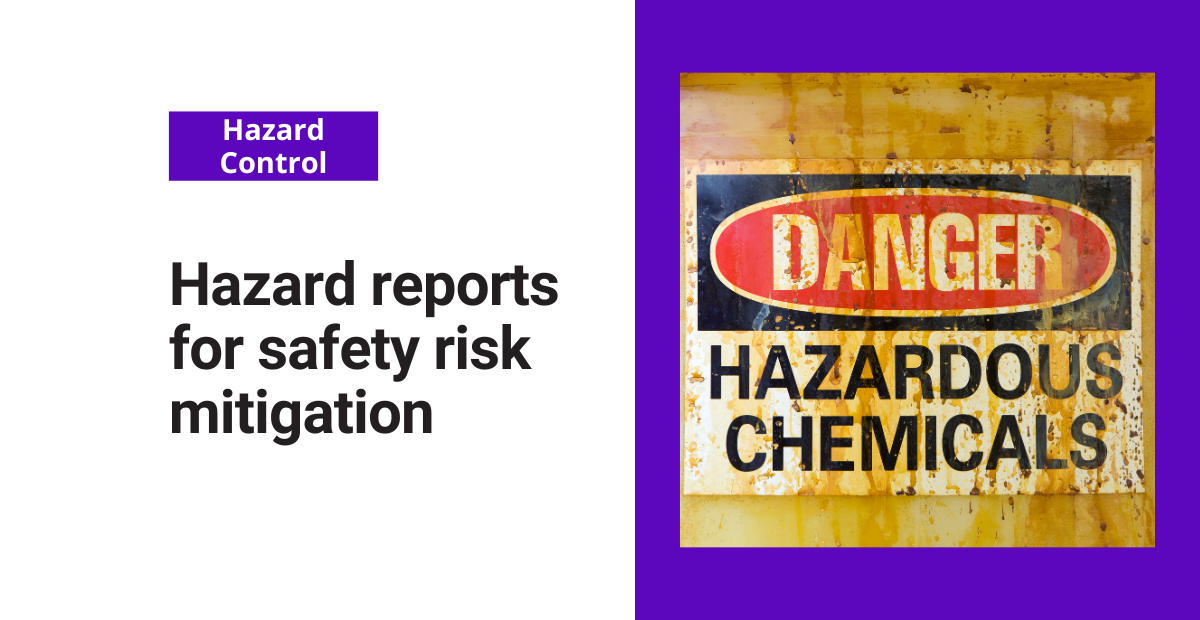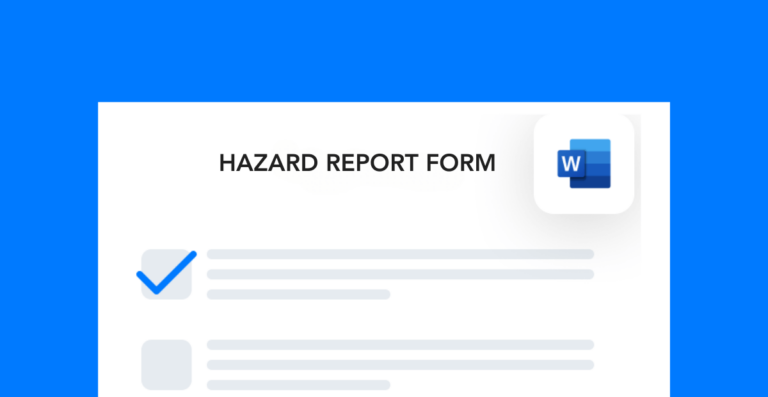Hazard reports are detailed records of potential safety issues in and around your facility. They serve as documentation and provide recommendations for how to reduce or eliminate safety risks.
Free template!
Download this hazard report form to use as a template for your team’s site-specific documentation.
Advantages of using hazard reports
Hazard reports can provide many benefits to your organization, given that they become a standard part of your EHS program. Here are some of the top advantages.
Proactive hazard identification
The best time to find a hazard is before it’s involved in an incident. By encouraging workers to report hazards they’ve found, you can prevent these issues from causing injuries, property damage, and more.
Developing company culture
In the EHS field, the term “safety culture” refers to the overall sentiment and approach towards safety within an organization. Because hazard reporting is a proactive procedure, it can have a positive impact on how your workers view safety.
Moreover, it helps contribute to the concept of “personal safety,” wherein workers take responsibility for their personal safety at work. When encouraged to report hazards, workers may feel more in control of their health and wellbeing.
EHS recordkeeping and trend analysis
The biggest advantage of recording hazards around your site is to identify patterns over time. Imagine you receive 16 separate hazard reports from one work area within the span of a few months.
Over time, you might start to consider the layout of that area. Maybe you’ll perform an in-depth process review to determine why so many hazards exist in that department. Without detailed hazard reports on file, it might be difficult to identify patterns as they happen.
Plus, thorough documentation is essential for protecting the company during regulatory audits or legal proceedings. Having a detailed record of the hazards within your site not only demonstrates your proactive approach towards safety but can also provide protection against false claims.
Elements of a hazard report
Create a comprehensive report by including these key elements in your document.
Basic details of a hazard report
The beginning of your report should list out basic details of what you’re going to cover.
- Name of person filling out the report
- Contact information for the EHS manager or person reporting the hazard
- Date of the report
- Location or department where you found the hazard
Once you have these pieces of information down, you can move on to recording your observations.
Hazard description
No report is complete without a full description of the hazard in question. Your description should answer the following questions:
- What type of hazard is it? (fall or trip, environmental, respiratory, etc.)?
- What is the specific location of the hazard?
- Is the hazard recurring or not?
Anyone reading your hazard report should understand it fully from the information you provide. Therefore, attach supporting documents such as photos or drawings when words alone cannot provide a complete picture.
Potential consequences
The question you want to answer in this section of the report is:
What are some of the potential consequences if the hazard isn’t removed or controlled?
Maybe the issue could cause an environmental contamination event. Or perhaps it could result in severe worker injury. This section provides more context on how severe (or not) the hazard is to the company.
Control measures
The next step is to record all the control measures that you either currently have in place or believe would help eliminate the hazard.
Corrective action items
The last element of the report lists the action items needed to address the hazard. Next, brainstorm your solutions and decide on your next steps. Finally, schedule and assign those action items as soon as you complete the report.
You can use an action tracking system to easily follow the progress of all corrective actions. That way, your team stays on top of all the hazard reports submitted and can make continuous to the overall safety of your site.





